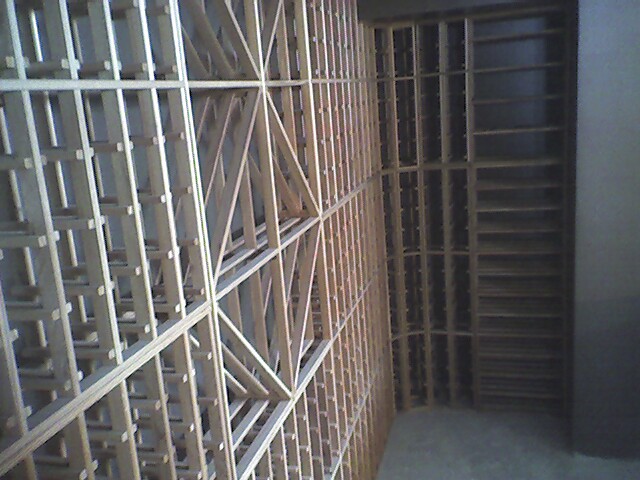

TIPS FOR BUILDING A WINE CELLAR
|
The construction of a wine cellar must satisfy the essential conditions required for proper wine preservation: - - Constant temperature (preferably between 11 and 14oC) - - A good level of humidity (ideally between 60 and 80%, no less than 50%). Too much humidity causes mildew to form on the cork and deteriorates the label, whereas too little humidity dries up the cork. - - Free of vibrations. Movement is harmful for wine. - - Obscurity. Always as little light as possible.
-
- An
odour-free environment. As cork is porous, any odour present in the
cellar risks being carried over to the wine. Avoid garages and furnace
rooms. Furthermore, a wine cellar is not a pantry. Do not keep onions,
tomatoes or other foods in the wine cellar. |
|
|
|
Walls and ceiling
Insulation must be at least R20 and ideally R30 factor or more, in order to ensure stability with regard to temperature and humidity levels. The interior of your cellar must be as inert as possible. Urethane is the best choice of insulation, as it hermetically seals the walls and ceiling. Rigid insulation panels are also recommendable. Mineral wool can also do the trick if it is well protected from humidity, which could cause it to lose its insulating capacity over time. A vapour-seal is necessary to maintain the level of humidity. Sheets must overlap, be secured with adhesive tape and placed between the insulation and the waterproof gyprock (used for bathrooms). The paint must be mould-resistant latex. Bathroom paint works well. It is best to choose dark colours for more obscurity. If you are working in an hold wine cellar, consult our page concerning fungi and mildew.
Door
Floor
Lighting Wine (especially white wine) is not favourable to light. It is best to have an obscure wine cellar where care has been taken to block out all light passages, particularly through the door. To illuminate this space, ban fluorescent lighting, which could alter the quality of the wine. If you want some sort of ambient lighting, you must consider a system with minimal lighting. A second system can provide supplementary lighting, as required, when you are working in the cellar. In order to avoid any unnecessary temperature variations, purchasing a lighting system that generates little heat, such as LEDs, is recommended. You can also install light dimmers.
Cooling systems
The 'hot' side of a wine cooling unit must be inside a room (interior). The most popular cellar cooling systems, such as KoolR, Wine Guardian and Fondis, do not generate humidity. They only preserve the humidity already present in the cellar. These cooling units will be sufficient for most private residences. In the case of a restaurant or a residence with a particularly dry environment, it may be necessary to resort to using a humidification system. In any case, domestic air-conditioners are to be proscribed. These cannot sufficiently lower the temperature and will completely eliminate the humidity from the cellar.Storage As wine bottles are best stored sideways to ensure that the cork stays in contact with the wine and remains moist and to prevent oxygen from entering the bottle, you must consider installing many slanted storage spaces. Only a few screw-topped bottles can be vertically stored. Bottles should be stacked in such a way that you do not have to move a bottle to access another. A number of storage systems are available: modular, (individual, bulk, irregular bottles) red cedar, metallic or red clay. They can be bought in standard sizes or customized to your needs, but pay special attention to their sturdiness and, most of all, choose odour-FREE cedar. Individual racks make it easier to locate the position of each bottle. You can even number the racks. Bulk racks (diamonds, cubes, blocks, etc.) are used especially for stocking large quantities of identical bottles. |
||
 |
Maitre de cave is a wine expert who can build you a cellar featuring the necessary requirements for the safekeeping of lesser wines as well as great vintages. (Contact) |
(see gallery) |
Home Contact Private cave Online store Stock management Photo gallery